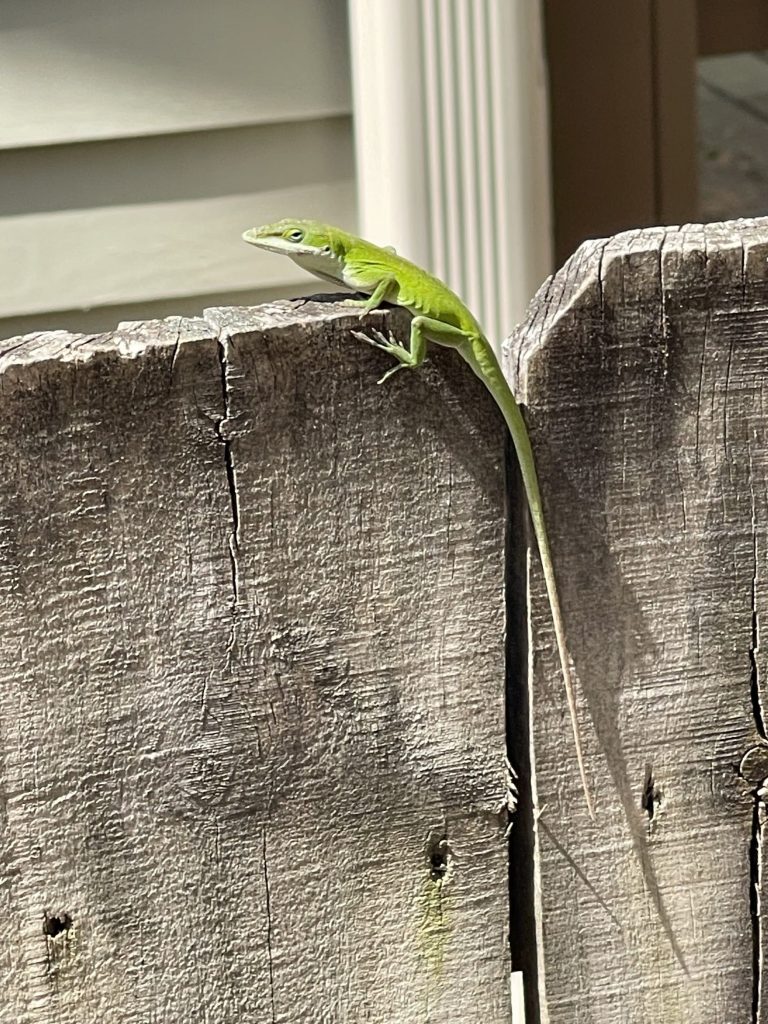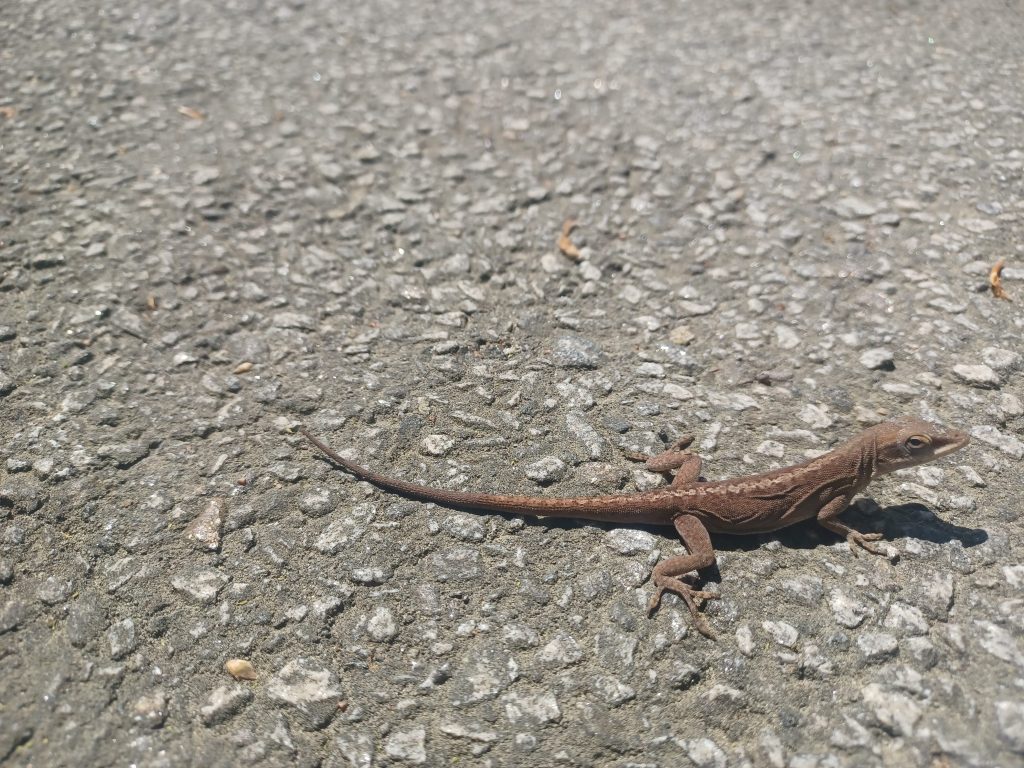By Jeremy Varner

First thing we have to settle when talking about green anoles (Anolis carolinensis), the small green or brown lizards common in our yards, is how to pronounce their name. For a long time, I thought you pronounce anole like a solitary FSU Seminole: “uh-nole” or “eh-nole.” (The second version of that pronunciation might get you in trouble in polite conversation.) However, internet research led me to the correct pronunciation of “uh-no-lee,” or if you want the official International Phonetic Alphabet pronunciation: /əˈnoʊ.li/.
Then we can talk about their colors. Green anoles can be green or brown and can change from one to the other, which leads a lot of people to call them chameleons (among several other common names). They are not true chameleons and can’t be any color of the rainbow like those googly-eyed wonders. But they can change colors quickly. I’ve seen one in its green phase move from green vegetation onto my brown wooden porch and then change colors in about one minute. So the green anole can be brown, but that doesn’t make them a brown anole (Anolis sagrei), which are a related but invasive species in Florida.
If all of this is a tad confusing, the UGA Savannah River Ecology Laboratory has a nice website with easy-to-digest information about the anoles and all the other reptiles and amphibians of Georgia. I highly recommend it if you want to read more about anoles or if you find Mr. No Shoulders – you know, a snake – and need to know if he’s dangerous. Of course, there’s also Wikipedia, which helped me figure out the pronunciation.

Now that we know who and what they are we can move on to more interesting things like dewlaps. Male green anoles have wonderfully red/pink/orange-red dewlaps or throat fans that they push out to communicate a host of messages. If they are talking to another male the message is likely, “Hey buddy, this place is taken. Go find your own sunny spot.” Or if they are talking with a female, it might be, “Hey ma’am, look at this wonderfully sunny spot I have control of. Come soak up the rays with me. We’ll make beautiful babies.” Either way, it is a lot of fun to see one pooch out his dewlap and bob his head. It’s like enjoying a David Attenborough special when you were just going to the mailbox.
Anoles are generally small and cute, but their size comes with some hazards, especially if there are cats around. Dr. Kerrie Anne Loyd, now a professor at Arizona State, did some cool research on free-roaming cats for her PhD at UGA. Her 2012 dissertation, entitled Kittycams: A Window into the World of Free-Roaming Cats, found that green anoles (or Carolina anoles as she calls them) were the most common prey species of free-roaming cats.
I hope you get a chance to enjoy these miniature dinosaurs during the coming hot months. They are wonderful animals to have around!




